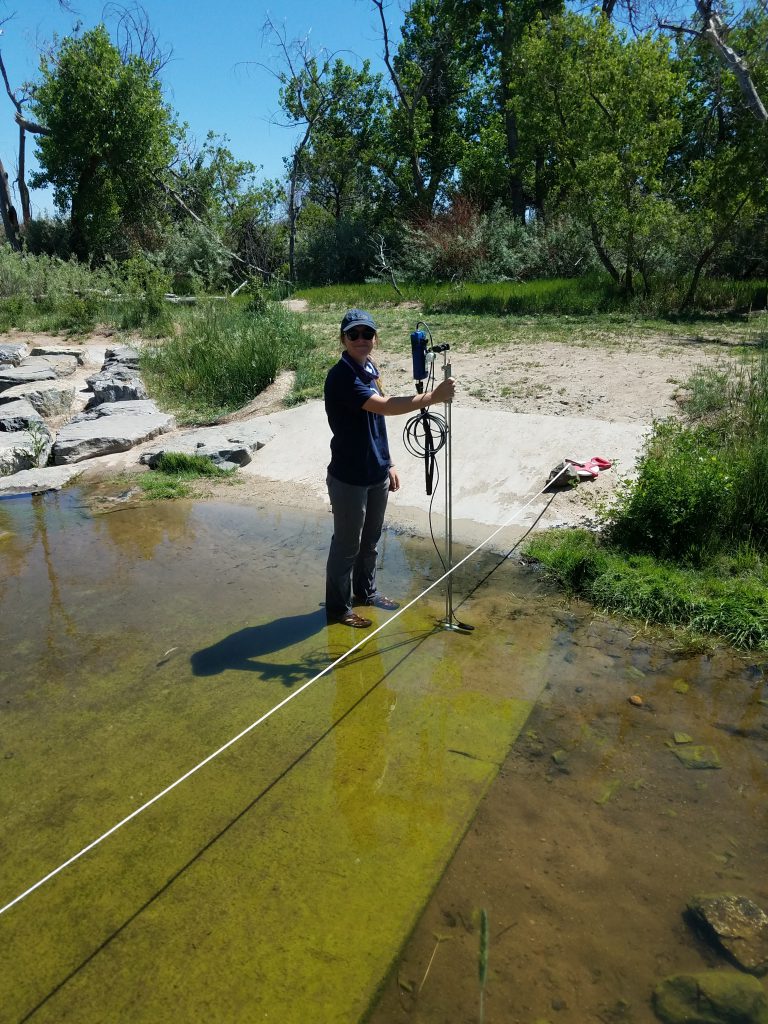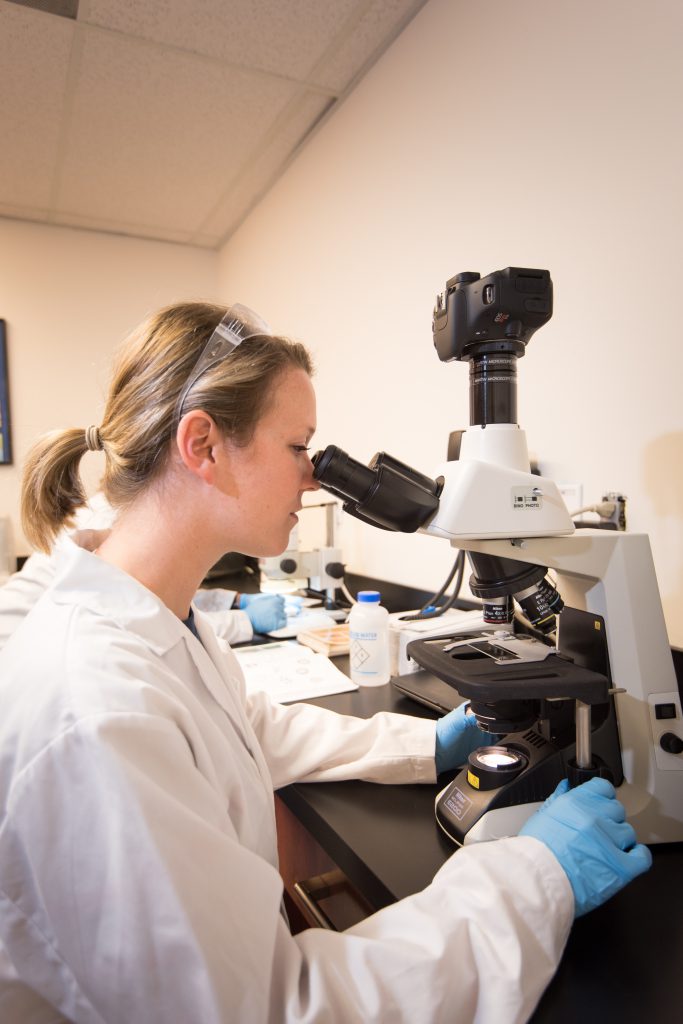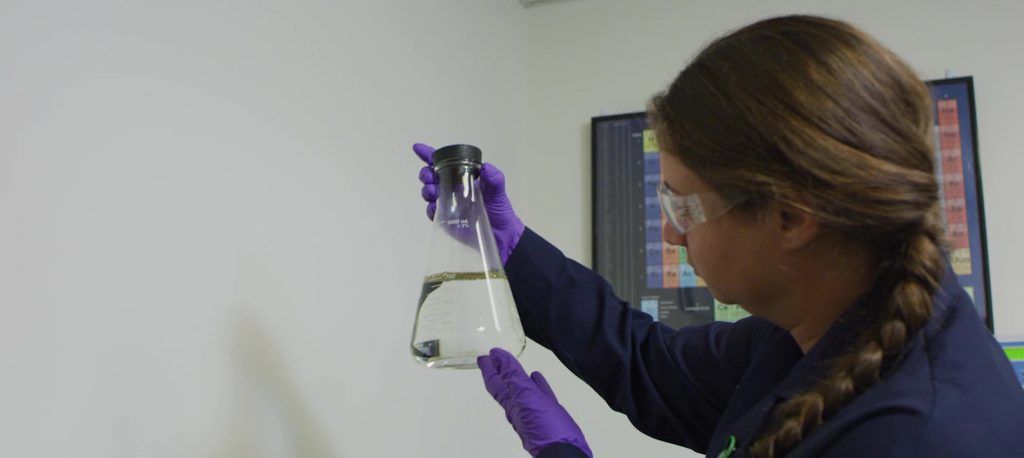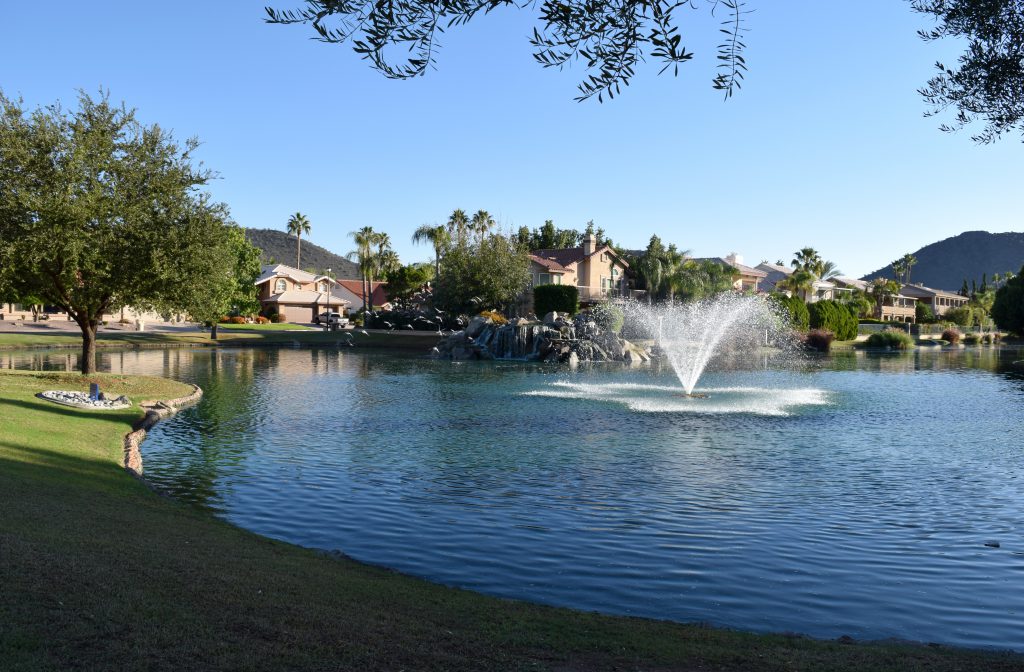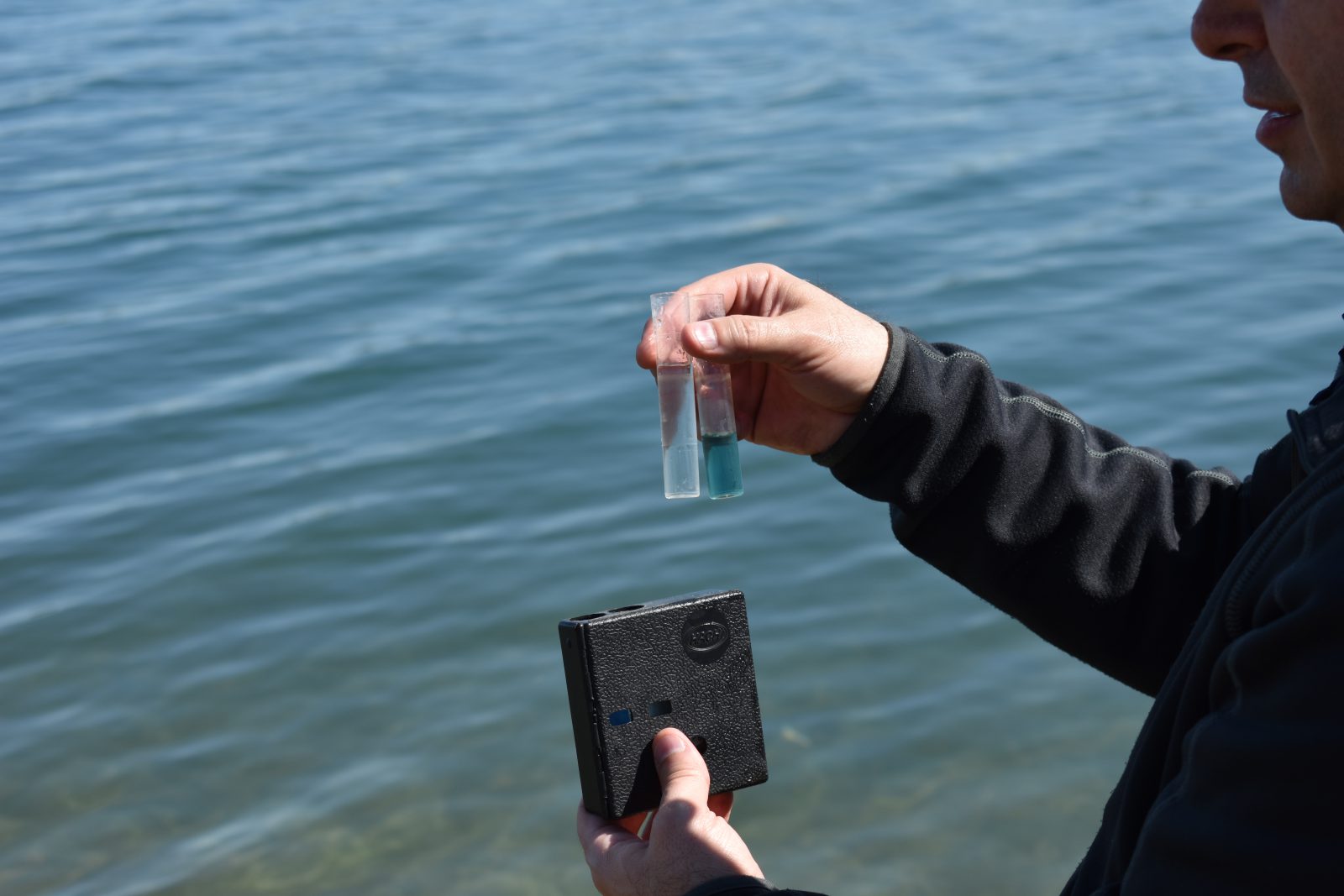
Water Quality Testing in Lakes, Ponds, and Wetlands
We appreciate our water resources for many reasons – for the way the sun sets across the surface, the connection we feel when watching aquatic wildlife, and the feeling of cool water on your toes as you dangle your feet off the dock. What many people don’t realize is that there is so much more going on down below.
Our waterbodies are each comprised of unique characteristics and chemistries that can change significantly over time. These conditions have a direct impact on the growth of algae and aquatic weeds, water cloudiness and bad odors, and even muck development on the bottom. By collecting water quality data on a regular basis, lake and pond owners can make more informed management decisions to support the future of their waterbodies.
The Importance of Water Testing in Lakes, Ponds, and Wetlands
Lake and pond water quality is impacted by both natural processes and human influence. Natural factors like the weather can be hard to control, though they generally create few problems. The most serious water quality issues typically originate from human activities like pollution or improper land usage in or near the pond. Luckily, the effects of these activities can often be minimized with proactive management and early detection of issues through lake water quality testing.
Recurring Water Quality Testing
Regularly testing your lake or pond water is an essential step for assessing the overall health and for spotting and preventing potential problems before they happen. In waterbodies with an existing water quality program, testing is an important tool for diagnosing the cause of the issues and finding suitable treatment strategies. Even if nothing seems obviously wrong, regular testing finds changes that occur over time and allows you to keep minor issues from becoming expensive problems later on.
What We Test for in Lakes, Ponds, & Wetlands
- pH—refers to the amount of alkalinity or acidity of the water. The pH can be affected by chemicals that enter the water naturally or through polluted runoff. Testing pH is an essential indicator that the water is changing chemically due to external factors.
- Dissolved Oxygen (DO)—refers to the level of free, non-compound present oxygen in pond or lake water. It is critical for the health of aquatic habitats. Too much DO can cause imbalances; too little, and there is not enough for the fish and aquatic wildlife. The right ratio creates a healthy ecosystem for plants and fish.
- Water Elevation—is used to measure how much water is in a lake or pond. Water levels fluctuate for a variety of reasons, often in response to change in precipitation, but also as a result of human activity. Low water levels can lead to flooding, undesirable nutrient concentration, muck development, and can increase the likelihood of harmful algal blooms.
- Clarity—indicates the amount of light that penetrates the water. Tracking water quality provides a lot of information about the health of a pond or lake. Low clarity may indicate excess algae. If the water clarity is consistently low, it may indicate poor water quality that could affect insect, plant, and fish communities.
- Presence of Organic & Inorganic Chemicals—unless they are professionally applied for a specific reason, chemical fertilizers, pesticides, and other pollutants negatively disrupt the natural biological communities in a lake or pond and kill desirable organisms. Specifically, fertilizers used on lawns and gardens will contribute to an increase in nuisance plant and microbial growth, as well as the development of toxic cyanobacteria.
- Bacteria—bacteria in lakes and ponds can cause waterborne illnesses. Of course, bacteria are present in all lakes and ponds, but if the level of certain types of bacteria becomes too high, they affect the oxygen levels and can put the fish population of the pond or lake at risk. They can also endanger humans using the lake or pond.
Testing for Harmful Bacteria
It is easy to see when nuisance plants and algae are present in lakes and ponds. However, dangerous bacteria and toxins cannot be seen with the naked eye. Bacteria are single-cell organisms that are usually a natural part of water, but without proper management they can reach dangerous thresholds.
Good bacteria don’t harm plants or fish in the pond. They actually feed on harmful bacteria and other organisms that would otherwise thrive. They also play an important role in nutrient cycling since many bacteria feed on the excess nitrogen produced by plants and fish. Harmful bacteria, on the other hand, infect plants and fish, which leads to disease or death.
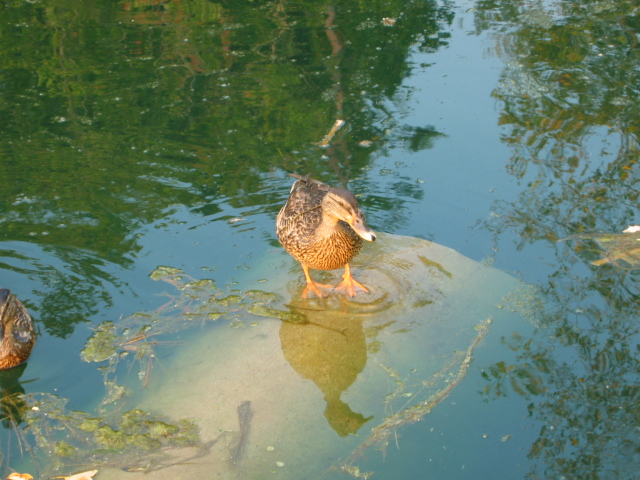
Is there too much bacteria in your waterbody?
There are many signs that you may have too much bacteria in your lake or pond, but to get ahead of these indicators, water quality testing for harmful bacteria should take place on a regular basis. It is also recommended if:
- It has rained recently. When it rains, stormwater can pick up harmful bacteria and carry them into lakes and ponds.
- There are a lot of waterfowl, like geese, that live in or around the lake. Bird feces can add significant levels of bacteria and other pathogens to the water.
- Crowds. There is a connection between people at beaches and large amounts of bacteria in the water.
Preventing Lake & Pond Water Quality Problems
Water quality issues in ponds and lakes can usually be prevented with some proper management techniques. Here are some tips:
- Test the lake or pond water regularly to assess bacteria growth and monitor for any other non-visible problems like algal toxins, excess nutrients, and dissolved oxygen deficiencies.
- Prevent overgrowth of algae and aquatic plants by applying nutrient remediation products and beneficial bacteria (think probiotics for your waterbody).
- Introduce a floating fountain, submersed aeration system, or other aeration solutions like Oxygen Saturation Technology (OST). These are excellent tools to improve dissolved oxygen levels and increase circulation throughout the water column.
- Reduce or limit activities that may cause chemicals and fertilizers to end up in a lake or pond. This includes halting the use of lawn and garden fertilizers and pesticides, as well as picking up pet waste and bagging leaves, grass clippings, and other yard materials so they do not get carried into the water.
- Maintain a plant buffer around the pond to help filter out trash and pollutants. Allow native, flowering, deep-rooted species to grow 3-5 ft or more from the shoreline in a tall, beautiful buffer.
- Use a mechanical hydro-rake to remove bottom muck and detritus, which contain high levels of excess pollutants and contribute to flooding and eutrophication – the aging of a waterbody.
Limit future erosion problems by introducing a knitted containment tool called SOX Solutions, which can be strategically shaped to stabilize your shoreline and enhance the aesthetic of lake and pond banks.
Setting Up Your Waterbody for Continued Success
Maintaining the health and balance of lakes and ponds is of critical importance since they provide aesthetic and recreational benefits that positively affect property values and support everyday life in our communities. Recurring management is a more effective and typically a more cost-effective way to maintain your waterbody in its ideal form so that it continues to meet your goals without significantly changing over time. If this sounds like the right approach for your property, contact a professional lake manager today to begin designing your custom annual management plan.
Water Quality Assessments for Lakes, Ponds & Wetlands
SOLitude Lake Management is a nationwide environmental firm committed to providing sustainable solutions that improve water quality, enhance beauty and preserve natural resources.
SOLitude’s team of aquatic scientists specializes in the development and execution of customized lake, stormwater pond, wetland and fisheries management programs. Services include water quality testing and restoration, algae and aquatic weed control, installation and maintenance of fountains and aeration systems, shoreline erosion control, muck and sediment removal and invasive species management. SOLitude partners with homeowners associations, golf courses, private landowners, businesses and municipalities. SOLitude Lake Management is part of Rentokil, a leading business services company, operating across the United States, Canada and Puerto Rico.
For more information, visit SOLitude Lake Management at solitudelakemanagement.com, and connect on Facebook, LinkedIn and Twitter.








